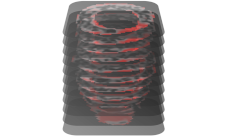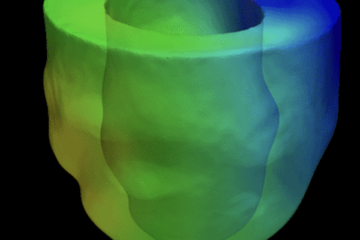AF Symposium 2020: Cryoablation pulmonary vein isolation is safe and effective for persistent atrial fibrillation at one year
Published by Alex Van Horn on

Hugh Calkins (Johns Hopkins Medical Institutions, Baltimore, USA) told delegates attending the AF Symposium 2020 (23–25 January, Washington, DC, USA) that cryoablation with the Arctic Front catheter (Medtronic) was a safe and effective approach for managing persistent atrial fibrillation (AF). He added that the
procedure also improves quality of life and reduces symptoms.
Calkins commented: “So, I think we all know that pulmonary vein isolation is the cornerstone of AF ablation. We also know cryoablation is a safe and effective way to isolate the pulmonary veins and that, currently, no catheter is approved for ablation of the pulmonary veins in patients with persistent AF. It was with that background that this study [STOP PERSISTENT AF] was designed.” He added that the aim of the study was to determine the safety and efficacy of pulmonary vein isolation with cryoablation (with the Arctic Front catheter) for the management of persistent AF. Calkins told Cardiac Rhythm News that prior studies have indicated cryoablation is “equally as effective as radiofrequency ablation” in terms of isolating the pulmonary veins. He added: “Some studies suggest a safety advantage, but this is operator dependent. There is an ongoing trial that is seeking to obtain data for a labelling for an radiofrequency ablation catheter for the treatment of persistent atrial AF, [but] the results are not yet available.”
The primary efficacy endpoint of STOP PERSISTENT AF was success (including acute procedural success and freedom from atrial fibrillation/tachycardia) and the primary safety endpoint was a safety event rate of lower than 13%. Of 165 patients enrolled in the study, follow-up data was available for 145 at 12 months. At this time point, the rate of the primary efficacy endpoint was 54.8% (Kaplan-Meier estimate) and the rate of the primary safety endpoint was 0.6%. Calkins noted that the rate of primary efficacy endpoint exceeded its prespecified performance goal while the
rate of the primary safety endpoint “was well below” its prespecified goal. Furthermore, following cryoablation, quality of life improved and AF symptoms were reduced.
“STOP PERSISTENT AF was a FDA-regulated, multicentre, prospective evaluation of cryoballoon pulmonary vein isolation only ablation in patients with persistent AF that achieved the safety and efficacy primary endpoints,” he concluded.


